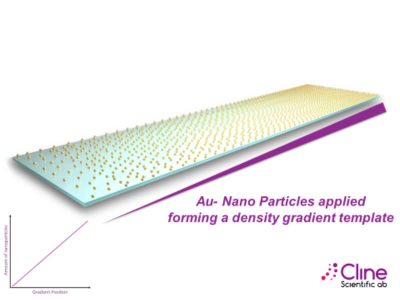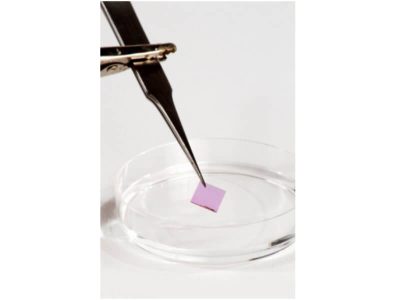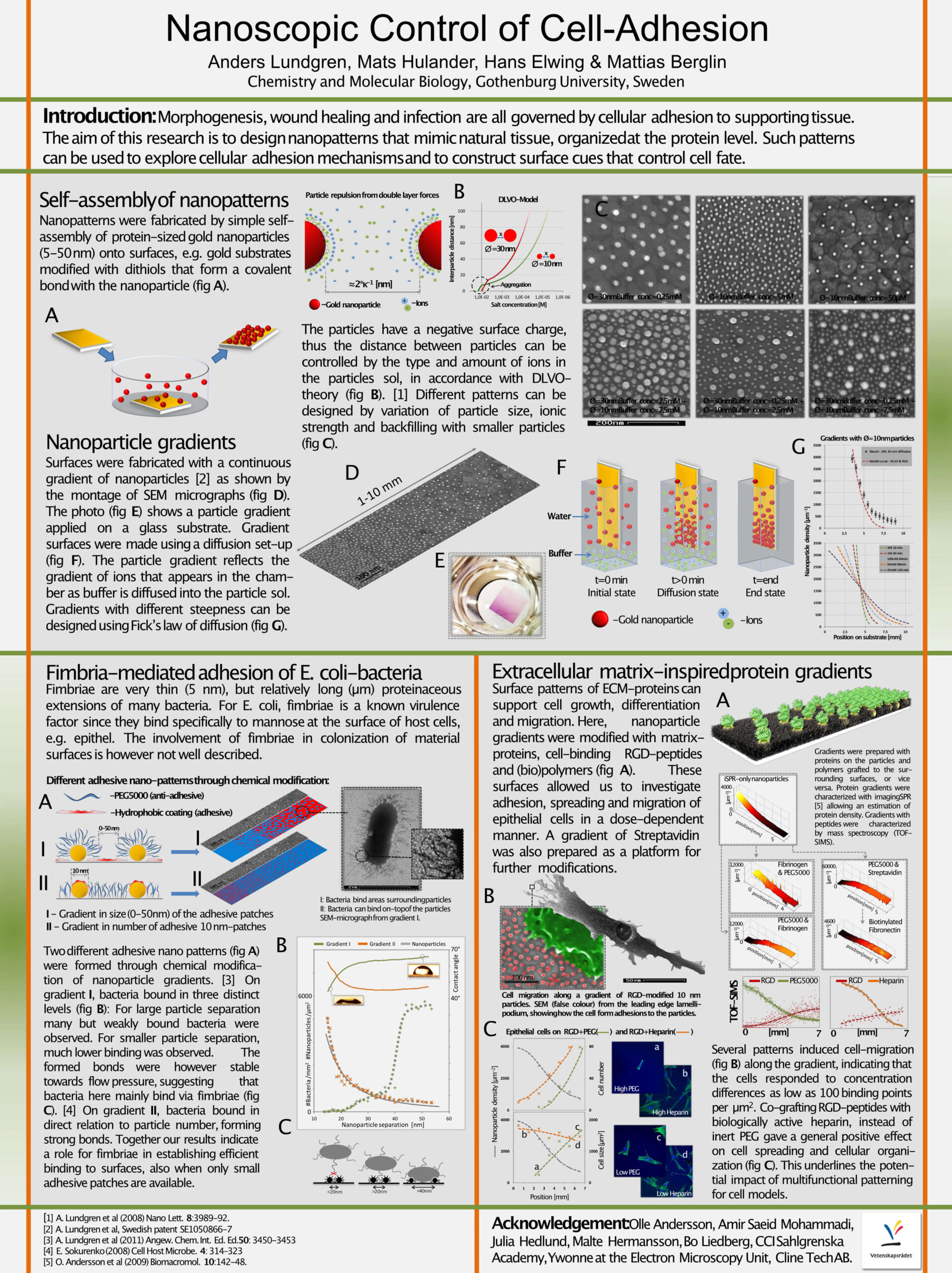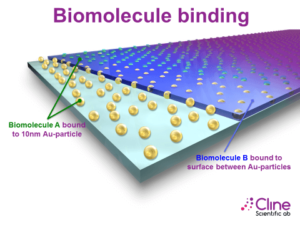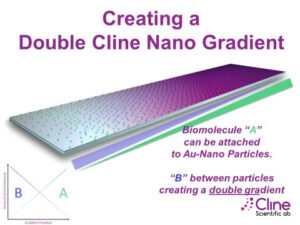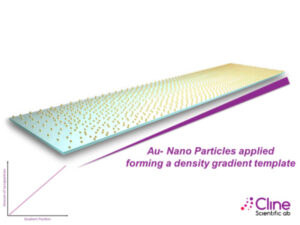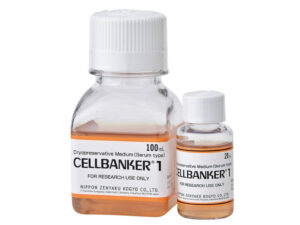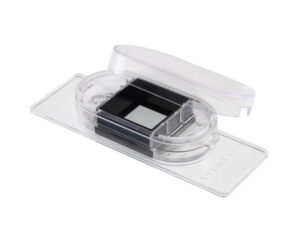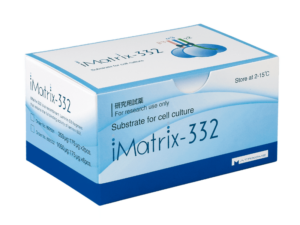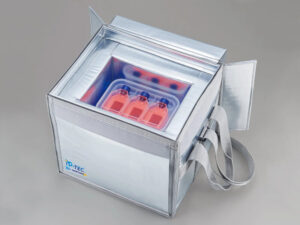Cline Nano Gradient
Nano-patterned surfaces for mimicking tissue function
Product Basics
Cline Scientific has developed an innovative nanotechnology-based product for work within Life Science (e.g. stem cell and cancer research). It is the only company in the world providing surface gradients of nanoparticle-bound molecules for in-vitro applications. Cline Nano Gradients and Cline Nano Surfaces consist of nano-patterns of gold nanoparticles onto which biomolecules can be attached to create surfaces mimicking tissue function at the molecular level.
The unique feature of the Cline Nano Gradient is the continuous dispersion of the gold nanoparticles onto a surface in a gradient pattern. This gradient can be utilized to screen for sensitive reactions/interactions between cells and molecules, thus determining the optimal composition of biomolecules responsible for a certain cellular response. The region on the gradient responsible for a reaction can be recreated in a Cline Nano Surface
Key Benefits
- Create a continuous gradient of your choice of growth factor or small molecules
- Find specific developmental conditions for stems cells in less time compared to conventional titration method
- Create cell migration assay
Technical Information
Technology
Cline’s patented method, used to control the average distance between nano particles, is the key technology in creating a continuous density gradient.
Biomolecule Binding
There are two sites where your biomolecule of choice can bind to the Cline Nano Gradient:
- The first location to bind molecules is the nanoparticle gradient itself (Biomolecule A in figures 1 & 2).
- The second binding-site is the surface space between the nanoparticles (Biomolecule B in figures 1 & 2).
When both sites are coupled with biomolecules, it forms a double gradient, as shown in figure 2.
Binding method (examples)
| Biomolecule A | Biomolecule B |
|---|---|
| Thiol-linker-A Thiol-PEG-NeutravidinBiotin-A Thiol-NeutravidinBiotin-A |
Electrostatic Binding* |
Applications
1. Stem Cell Differentiation
“One surface replaces thousands of experiments”
The immediate environment is critical for stem cells in regulation of their function. The use of Cline Nano Gradient to screen for the exact needs of your cells, allows for faster advances in stem cell R&D. The area in the gradient where optimal cell differentiation is found can then easily be recreated using Cline Nano Surface.
Benefits
- Safely select homogenous cell populations
- Screen for cell responses using a gradient
- More experiments done in less time
- Mimic tissue function
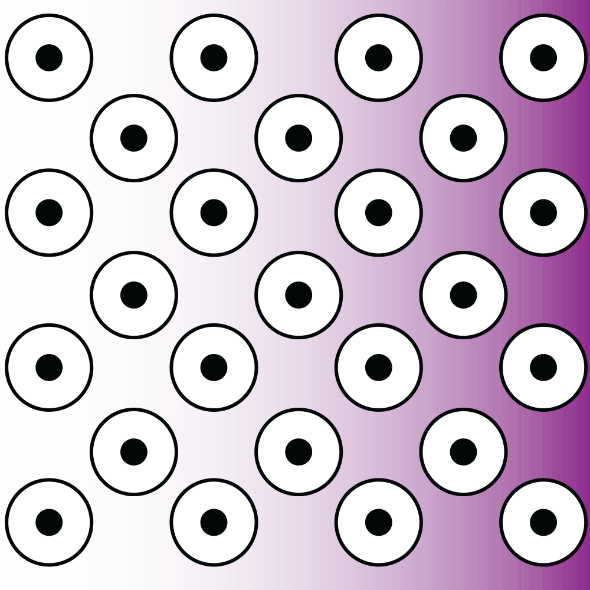
Seed Cells
Seed your cells on a Cline Nano Gradient of surface- bound molecules.
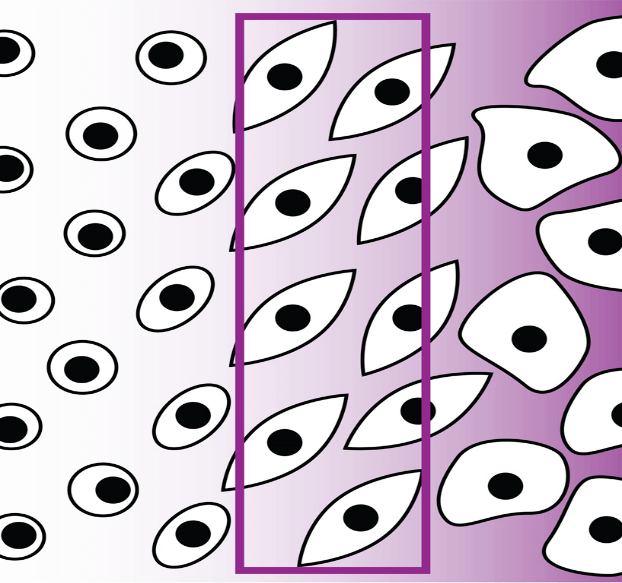
Analyze and Select
Allow the cells to react to their surroundings and then identify your optimal surface composition.
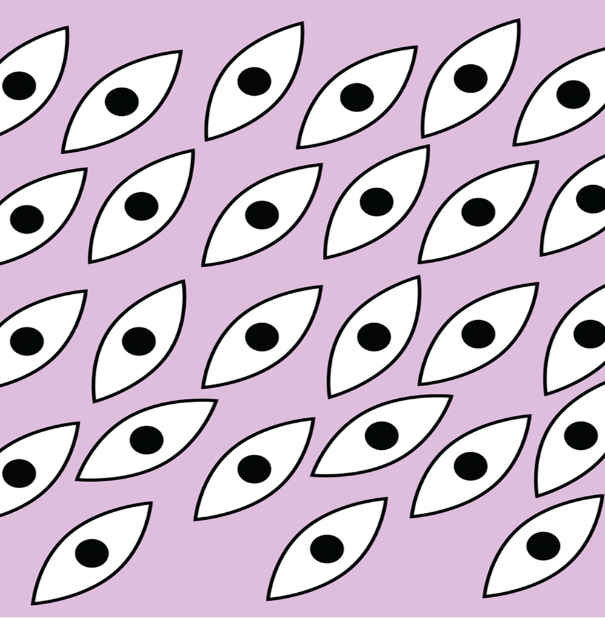
Reproduce
The Cline Nano Surface recreates the optimal conditions for your cells and allows you to reproduce your results.
2. Cencer Research & Cell Migration
“One surface replaces thousands of experiments”
“Ultimate cell control through molecular precision”
The Cline Nano Gradient can be utilized to study sensitive gradual cell behaviors such as cellular movement and cell migration. This is achieved by creating a surface gradient of biomolecules stimulating cellular movement. Cells are cultured, then analyzed by live imaging or by staining.
Benefits
- Study directional cell migration
- Specific migration along a continuous surface gradient
- Cell control at the molecular level
- Screen for change in cancer cells’ migratory behavior

Seed Cells
Seed your cells on a Cline Nano Gradient of surface bound biomolecules.
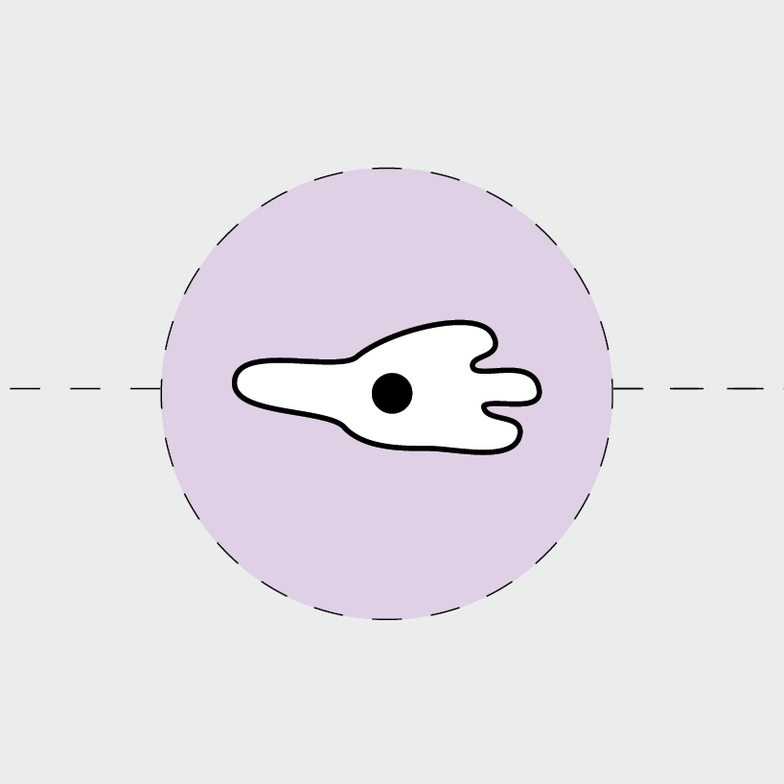
Migration
Study how the cells migrate on the surface gradient of biomolecules.
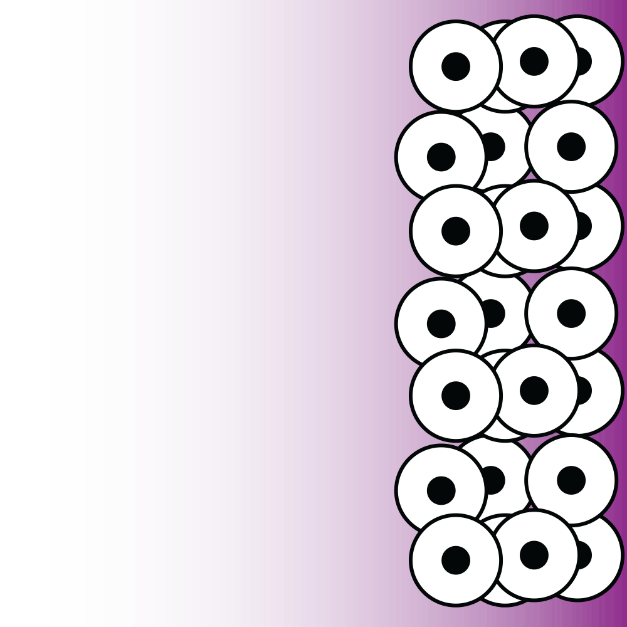
End Point
Quantify cell migration according to your preferred method (e.g. cell numbers, motility, viability, or distance migrated)
Specification
- Format: Glass Cover slip
- Manufactured by: Cline Scientific
Pricing
References & Literature
Lundgren, Anders et al. “Gold-nanoparticle-assisted self-assembly of chemical gradients with tunable sub-50 nm molecular domains.” Particle & Particle Systems Characterization 31 (2014): 209-218. https://doi.org/10.1002/ppsc.201300154
Hulander, Mats et al. “Immune complement activation is attenuated by surface nanotopography.” International journal of nanomedicine vol. 6 (2011): 2653-66. https://doi.org/10.2147/IJN.S24578
Hulander, M et al. “Gradients in surface nanotopography used to study platelet adhesion and activation.” Colloids and surfaces. B, Biointerfaces vol. 110 (2013): 261-9. https://doi.org/10.1016/j.colsurfb.2013.04.010
FOR RESEARCH USE ONLY, NOT FOR USE IN DIAGNOSTIC PROCEDURES
